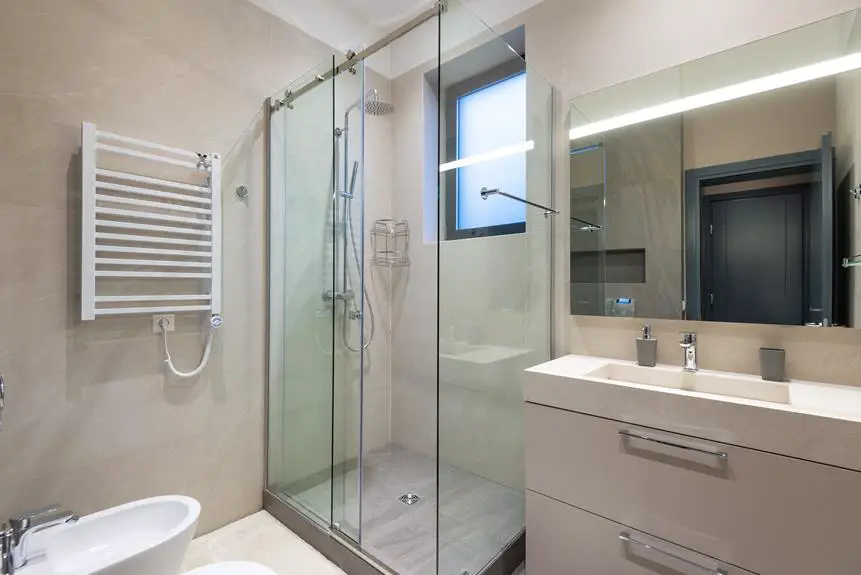You can add a bidet to an existing toilet. There are various bidet attachments available, such as bidet seats with sprayers, separate bidet units, and hand-held bidet wands.
Installing a bidet is usually simple and can often be done without hiring a professional. It requires connecting the bidet to the toilet's water supply using a T-valve and an extra hose.
When choosing a bidet attachment, consider features like water pressure control, a heating element for warm water, and nozzle splash guards.
Adding a bidet improves hygiene, comfort, and is eco-friendly.
Understanding Bidet Attachments
Bidet attachments are cost-effective and practical options for adding hygiene features to existing toilets. These attachments are less expensive than full bidet toilet seats and provide similar benefits. Installing a bidet attachment is simple and usually requires only basic tools; it does not need specialized plumbing. The attachment is placed between the toilet seat and bowl, connected to the water supply, and equipped with a shut-off valve.
There are different types of bidet attachments available, ranging from basic models that offer a clean water spray to advanced ones with additional features like heated seats for added comfort. Hand-held bidet sprayers provide more control but may be harder to install on non-standard toilets.
Using bidet attachments can reduce the use of toilet paper, which is environmentally beneficial as it conserves trees and water. These attachments are easy to install, fit most toilets, and can aid in hygiene and independence for people with disabilities or mobility issues.
Assessing Your Toilet Compatibility
To add a bidet to your toilet, first ensure your toilet's design and plumbing can accommodate a bidet's dimensions and connections. Measure your toilet to match the bidet's size requirements. Non-standard toilets, like the Porcelanosa NK One, may have limited access to the tank's input port, which can be problematic for installation.
For the installation, check that the bidet can connect to the toilet tank's input port and that there's easy access to this part. If you choose an electric bidet with features like adjustable water temperature, ensure there is an electrical outlet nearby.
If your toilet's water supply line size does not match the bidet valve's fitting, you may need adapters. Check the compatibility of the bidet with your toilet and plumbing system beforehand to anticipate potential issues.
Before installing a bidet, always turn off the water supply. Proper planning and consideration of these aspects will aid in a smooth installation process and allow you to enjoy the benefits of a bidet.
Step-by-Step Installation Guide
Begin the installation by turning off the toilet's water supply to ensure safety. Flush the toilet to empty the tank.
To install a bidet toilet seat, remove the existing seat by unscrewing its bolts. Place the bidet seat's mounting plate over the bolt holes and secure it with the provided hardware, checking for stability and alignment.
Next, connect the bidet's water line to the toilet's water supply. Remove the toilet tank's water supply hose and attach a T-valve. Reattach the hose to the T-valve's bottom, ensuring tight connections to prevent leaks.
For hand-held sprayers, attach a T-valve to the toilet tank, then connect the sprayer head and hose, ensuring tight and leak-free connections.
Electronic bidets requiring warm water may necessitate an additional connection to a sink's warm water source. Follow the manufacturer's instructions for this step.
After installation, turn the water supply back on and check for leaks or swelling in the hoses. Once the installation is verified as secure and leak-free, the bidet is ready to use. Monitor the installation during initial uses to maintain a secure setup.
Plumbing and Electrical Considerations
When adding a bidet to an existing toilet, it is important to check if the water pressure is compatible and if there is a GFCI outlet nearby for electronic bidets. Bidet attachments require a consistent water pressure level to work properly.
In the United States, compliance with specific plumbing and electrical codes is necessary for safety and functionality. Electronic bidets, which use less water, must be connected to a GFCI outlet to prevent electric shock in the damp bathroom environment.
Installing a bidet attachment may involve modifying the water supply lines to the toilet, which can include installing a T-valve to direct water to both the bidet and the toilet. All connections should be secure to avoid leaks, and hoses should be checked to ensure they do not swell from water pressure, which could indicate a problem with pressure regulation.
Some bidet models can be installed by the homeowner, but others may need professional installation, especially if the toilet design is non-standard or if the electrical setup is complex.
Proper consideration of these factors will ensure a successful bidet installation, improving personal hygiene and environmental sustainability.
Maintenance and Care Tips
Regular maintenance is essential for your bidet toilet seat's durability and hygiene. Clean the seat and nozzle frequently using a soft cloth and mild cleaner. If your bidet has a self-cleaning nozzle function, use it often. Otherwise, clean the nozzle manually with a soft brush or cloth to avoid mineral buildup.
Check the connections to your toilet regularly to prevent leaks which could cause water damage and reduce the bidet's efficiency. Replace water supply filters as per the manufacturer's instructions to ensure a clean and steady water flow.
Using a bidet can decrease the need for toilet paper, which is more eco-friendly and cost-effective. A bidet often reduces toilet paper usage, saving money and reducing strain on plumbing.
For those considering a bidet, stores like Home Depot offer a range of models. Visiting such retailers can provide insights into the different types and maintenance tips for the model you choose.
Proper care of your bidet will promote a clean bathroom and maximize your investment's value.





